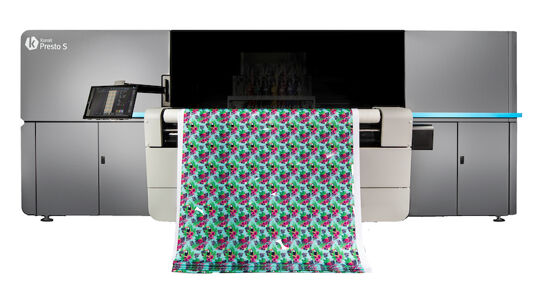Setting targets for energy use

From digital prepress through to performance analytics, data is the only way today to get accurate printed output and to measure business performance.
The need for greater environmental accountability, either voluntary or regulatory, means that we have a new category of data to worry about.
Except that relatively few small to medium sized businesses will want to bother with it which is not so good, because this new data dimension can actually help the bottom line. Companies cite the expense as a reason not to bother with sustainability data.
And yet time after time we come across companies with improved profits because of their sustainability and quality management efforts. Sustainability reporting creates an imperative and a discipline which can help make the business more efficient and profitable.
It all begins with a structure, the pillars and joists that provide the basics for sustainability policies and practices. The metrics are common for most companies, within and beyond the graphics business. Probably the simplest and most common starting point is to set targets for energy usage.
Calculate how much energy your business uses today on a monthly or annual basis. Then decide how much you want to reduce it over a certain period of time, compared to that base value. A common goal is to use 5% less within five years, which is hardly onerous. Setting a five-year timescale also gives you wriggle room for investing in energy saving measures, such as more efficient equipment or new insulation.
You can apply the same model for water usage and volumes of waste, if and how it gets recycled and how much of it goes to landfill. Aiming for a zero-waste target can start immediately. Indeed, any aspect of the business that has an environmental impact should be considered.
There is a surprising number of things you can start doing straightaway, like setting up recycling points in the company and asking staff for suggestions that could contribute to improved environmental impact reductions.
Many companies have developed road maps to help them gradually phase in sustainability initiatives. For small businesses, this can be an easier means of grappling with greenhouse gas emissions (GHG) relating to energy, transport and product use.
The roadmap should address products and processes separately and set targets, even if the target is just to consider eco-efficiency improvements and how the business is structured to promote best environmental practices.
The graphics industry is the same as other industries in that it is on a journey. The sustainability route starts with a couple of small steps that are easy to take and that can lead to a greener future.
Topics
Interested in joining our community?
Enquire today about joining your local FESPA Association or FESPA Direct
Recent news
.png?width=550)
FESPA Middle East 2025 Overall Highlights
It has already been 2 weeks since we opened the doors on the 2nd edition of FESPA Middle East.

How will Fiery simplify print processes and enhance their user experience
In this podcast, Debbie McKeegan interviews Michael Chramtchenko, Chief of Staff, Sales and Marketing at Fiery, discussing the company's innovative software solutions for the print industry, particularly in garment decoration.

What is digital textile printing and what are the opportunities?
Nessan Cleary shares how textile printing covers a wide range of different market sectors which vary in opportunities. Nessan discusses sportswear, direct to garment and home décor.

Vote now for the FESPA Awards’ People’s Choice Award!
The voting for the prestigious People's Choice FESPA Award is now open until 7th February where those in the industry have the opportunity to vote for their favourite entries, celebrating the exceptional talent in the industry.